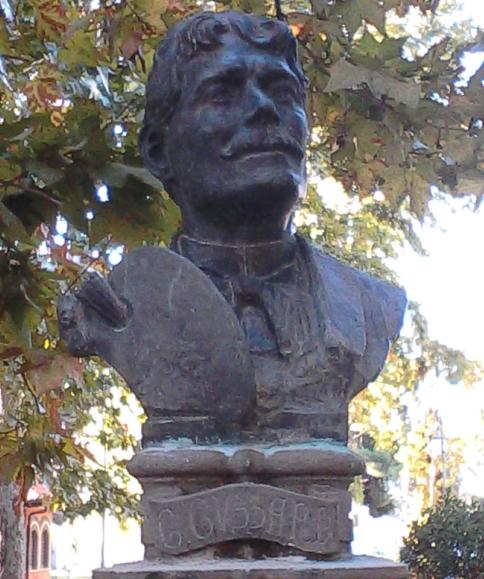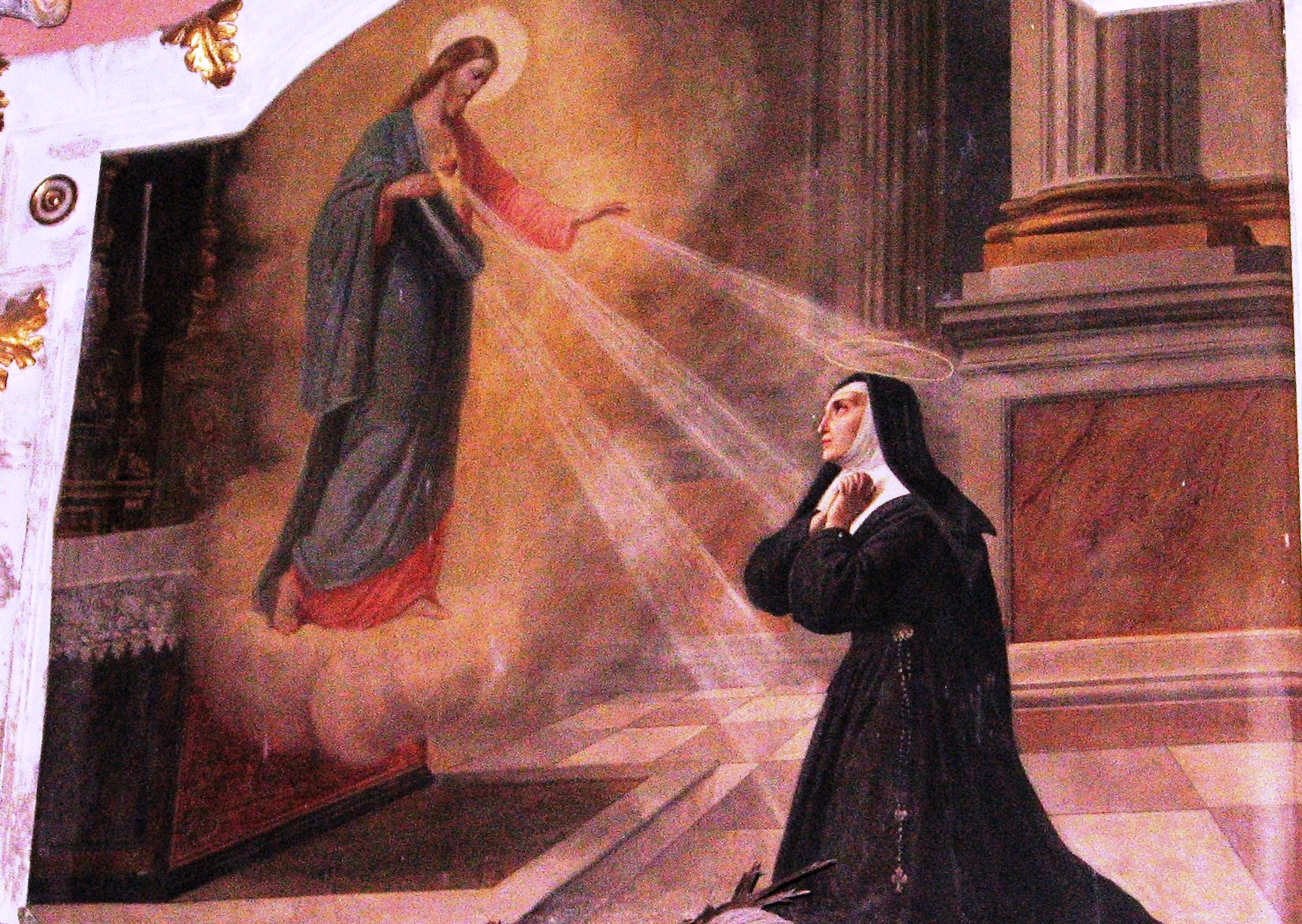|
Giuseppe Guzzardi
Giuseppe Guzzardi (December 8, 1845 in Adrano – September 14, 1914 in Florence) was an Italian painter. Biography Guzzardi was born in Adernò, now called Adrano. He first trained as a child with a local painter, Vincenzo Costa. His early work showed such promise that the comune awarded him a stipend to study in Florence, where he studied at the Academy of Fine Arts, Florence, Academy of Fine Arts under Antonio Ciseri. In 1874, he first exhibited at the Florentine Promotrice. In 1876 at the Academy in Florence, he exhibited ''The Virgin on Golgotha'' (now in Sanctuary of Maria SS. Ausiliatrice of Adrano). In 1876 he exhibited at the Florentine Promotrice ''Rural Idyll'', which the Artistic Fellowship selected to be copied for distribution to its members. He was also in demand as a portraitist. In the 1880s, he was named honorary professor at the Academy in Florence. He returned to his hometown of Adrano in 1887, to bring help during a cholera epidemic. After the epidemic, ... [...More Info...] [...Related Items...] OR: [Wikipedia] [Google] [Baidu] |
1845 Births
Events January–March * January 10 – Elizabeth Barrett receives a love letter from the younger poet Robert Browning; on May 20, they meet for the first time in London. She begins writing her ''Sonnets from the Portuguese''. * January 23 – The United States Congress establishes a uniform date for federal elections, which will henceforth be held on the first Tuesday after the first Monday in November. * January 29 – ''The Raven'' by Edgar Allan Poe is published for the first time, in the '' New York Evening Mirror''. * February 1 – Anson Jones, President of the Republic of Texas, signs the charter officially creating Baylor University (the oldest university in the State of Texas operating under its original name). * February 7 – In the British Museum, a drunken visitor smashes the Portland Vase, which takes months to repair. * February 28 – The United States Congress approves the annexation of Texas. * March 1 – President John Tyler signs a bill authorizing ... [...More Info...] [...Related Items...] OR: [Wikipedia] [Google] [Baidu] |
Painters From Florence
Painting is the practice of applying paint, pigment, color or other medium to a solid surface (called the "matrix" or "support"). The medium is commonly applied to the base with a brush, but other implements, such as knives, sponges, and airbrushes, can be used. In art, the term ''painting ''describes both the act and the result of the action (the final work is called "a painting"). The support for paintings includes such surfaces as walls, paper, canvas, wood, glass, lacquer, pottery, leaf, copper and concrete, and the painting may incorporate multiple other materials, including sand, clay, paper, plaster, gold leaf, and even whole objects. Painting is an important form in the visual arts, bringing in elements such as drawing, composition, gesture (as in gestural painting), narration (as in narrative art), and abstraction (as in abstract art). Paintings can be naturalistic and representational (as in still life and landscape painting), photographic, abstract, narrative, ... [...More Info...] [...Related Items...] OR: [Wikipedia] [Google] [Baidu] |
Italian Male Painters
Italian(s) may refer to: * Anything of, from, or related to the people of Italy over the centuries ** Italians, an ethnic group or simply a citizen of the Italian Republic or Italian Kingdom ** Italian language, a Romance language *** Regional Italian, regional variants of the Italian language ** Languages of Italy, languages and dialects spoken in Italy ** Italian culture, cultural features of Italy ** Italian cuisine, traditional foods ** Folklore of Italy, the folklore and urban legends of Italy ** Mythology of Italy, traditional religion and beliefs Other uses * Italian dressing, a vinaigrette-type salad dressing or marinade * Italian or Italian-A, alternative names for the Ping-Pong virus, an extinct computer virus See also * * * Italia (other) * Italic (other) * Italo (other) * The Italian (other) * Italian people (other) Italian people may refer to: * in terms of ethnicity: all ethnic Italians, in and outside of Italy * ... [...More Info...] [...Related Items...] OR: [Wikipedia] [Google] [Baidu] |
19th-century Italian Male Artists
The 19th (nineteenth) century began on 1 January 1801 ( MDCCCI), and ended on 31 December 1900 ( MCM). The 19th century was the ninth century of the 2nd millennium. The 19th century was characterized by vast social upheaval. Slavery was abolished in much of Europe and the Americas. The First Industrial Revolution, though it began in the late 18th century, expanding beyond its British homeland for the first time during this century, particularly remaking the economies and societies of the Low Countries, the Rhineland, Northern Italy, and the Northeastern United States. A few decades later, the Second Industrial Revolution led to ever more massive urbanization and much higher levels of productivity, profit, and prosperity, a pattern that continued into the 20th century. The Islamic gunpowder empires fell into decline and European imperialism brought much of South Asia, Southeast Asia, and almost all of Africa under colonial rule. It was also marked by the collapse of the large ... [...More Info...] [...Related Items...] OR: [Wikipedia] [Google] [Baidu] |
19th-century Italian Painters
The 19th (nineteenth) century began on 1 January 1801 ( MDCCCI), and ended on 31 December 1900 ( MCM). The 19th century was the ninth century of the 2nd millennium. The 19th century was characterized by vast social upheaval. Slavery was abolished in much of Europe and the Americas. The First Industrial Revolution, though it began in the late 18th century, expanding beyond its British homeland for the first time during this century, particularly remaking the economies and societies of the Low Countries, the Rhineland, Northern Italy, and the Northeastern United States. A few decades later, the Second Industrial Revolution led to ever more massive urbanization and much higher levels of productivity, profit, and prosperity, a pattern that continued into the 20th century. The Islamic gunpowder empires fell into decline and European imperialism brought much of South Asia, Southeast Asia, and almost all of Africa under colonial rule. It was also marked by the collapse of the large ... [...More Info...] [...Related Items...] OR: [Wikipedia] [Google] [Baidu] |
1914 Deaths
This year saw the beginning of what became known as World War I, after Archduke Franz Ferdinand of Austria, heir to the Austrian throne was Assassination of Archduke Franz Ferdinand, assassinated by Serbian nationalist Gavrilo Princip. It also saw the first airline to provide scheduled regular commercial passenger services with heavier-than-air aircraft, with the St. Petersburg–Tampa Airboat Line. Events January * January 1 – The St. Petersburg–Tampa Airboat Line in the United States starts services between St. Petersburg, Florida, St. Petersburg and Tampa, Florida, becoming the first airline to provide scheduled regular commercial passenger services with heavier-than-air aircraft, with Tony Jannus (the first federally-licensed pilot) conveying passengers in a Benoist XIV flying boat. Abram C. Pheil, mayor of St. Petersburg, is the first airline passenger, and over 3,000 people witness the first departure. * January 11 – The Sakurajima volcano in Japan b ... [...More Info...] [...Related Items...] OR: [Wikipedia] [Google] [Baidu] |
Chiesa Madre, Adrano
The Chiesa Madre (Mother Church), dedicated to Maria Santissima Assunta (Holiest Mary of the Assumption) is the largest Roman Catholic church in Adrano, and located in center of town, adjacent to the Norman Castle of the town, in the region of Sicily, Italy. History and description A church at the site was first commissioned in the 11th century by the initial Norman conquerors, specifically Roger II of Sicily, who would have been building the church adjacent to his Norman castle. The site was named ''Piano della Cuba'', perhaps because it already housed a house of worship at this site. The layout of the present church is mainly due to works patronized by Duke Francesco II Moncada between 1572 and 1592. This led to the building of the nave with two aisles and two side chapels. In 1750 a dome was built, tiled on the outer surface with painted bricks. The façade is framed with dark lava stone pilasters. In the tympanum above the portal is a marble depiction of the Assumption of ... [...More Info...] [...Related Items...] OR: [Wikipedia] [Google] [Baidu] |
Adrano
Adrano (, scn, Ddirnò), ancient ''Adranon'', is a town and in the Metropolitan City of Catania on the east coast of Sicily. It is situated around northwest of Catania, which was also the capital of the province to which Adrano belonged, now a metropolitan city. It lies near the foot of Mount Etna, at the confluence of the Simeto and Salso rivers. It is the commercial center for a region where olives and citrus fruit are grown. Neighbouring towns include: Biancavilla, Bronte, Paternò, Randazzo, Santa Maria di Licodia and Centuripe. History Founding and pre-Christian era The settlement was founded by Dionysius the Elder around 400 BC, intending to strengthen Syracusan power in the region. He named the town ''Adranon'' in honour of Adranus. In 344 BC the troops of Timoleon fought the forces of the Syracusan commander Iketas of Leontini near Adrano. During the following years, Adrano was frequently harried by Campanian mercenaries, called the Mamertinians. The Romans c ... [...More Info...] [...Related Items...] OR: [Wikipedia] [Google] [Baidu] |
Margaret Mary Alacoque
Margaret Mary Alacoque, VHM (french: Marguerite-Marie Alacoque) (22 July 1647 – 17 October 1690), was a French Catholic Visitation nun and mystic who promoted devotion to the Sacred Heart of Jesus in its modern form. Summary She worked to prove the genuineness of her vocation and her visions of Jesus and Mary relating to the Sacred Heart. She was initially rebuffed by her mother superior and was unable to convince theologians of the validity of her visions and revelations. A noted exception was the Jesuit Claude de la Colombière, later a canonized saint, who supported her. The devotion to the Sacred Heart was officially recognized 75 years after Alacoque's death. Early life Alacoque was born in 1647 in L'Hautecour, Burgundy, France, now part of the commune of Verosvres, then in the Duchy of Burgundy, the only daughter of Claude and Philiberte Lamyn Alacoque, who also had several sons. From early childhood, Margaret was described as showing intense love for the Bles ... [...More Info...] [...Related Items...] OR: [Wikipedia] [Google] [Baidu] |







